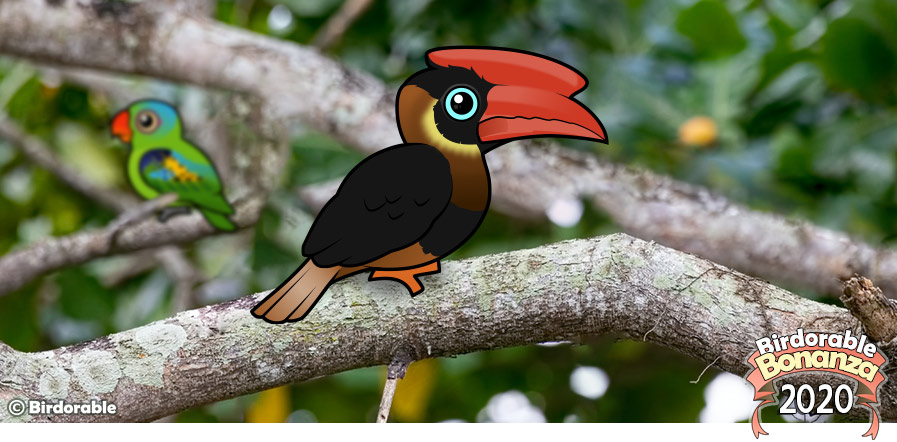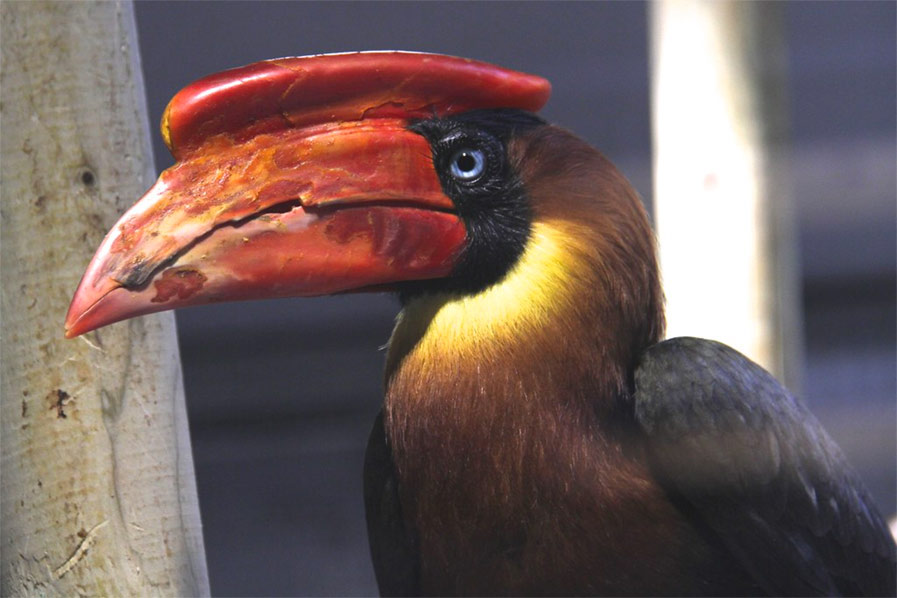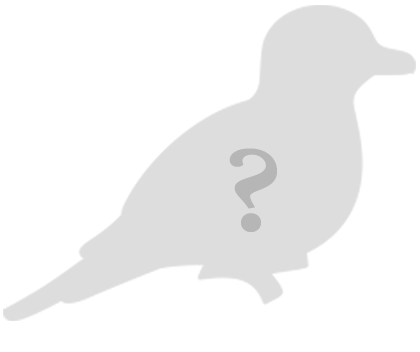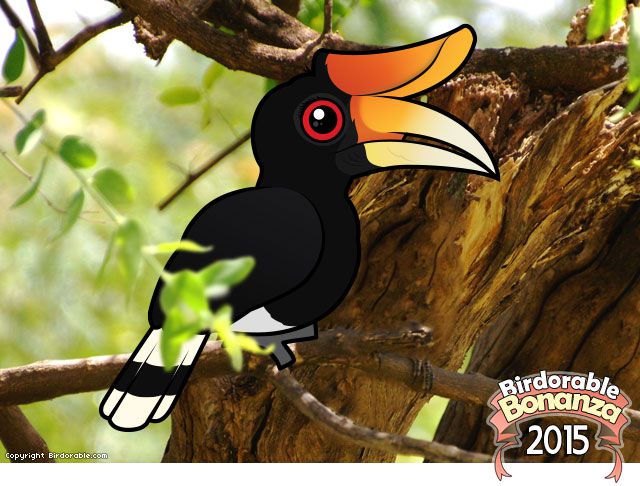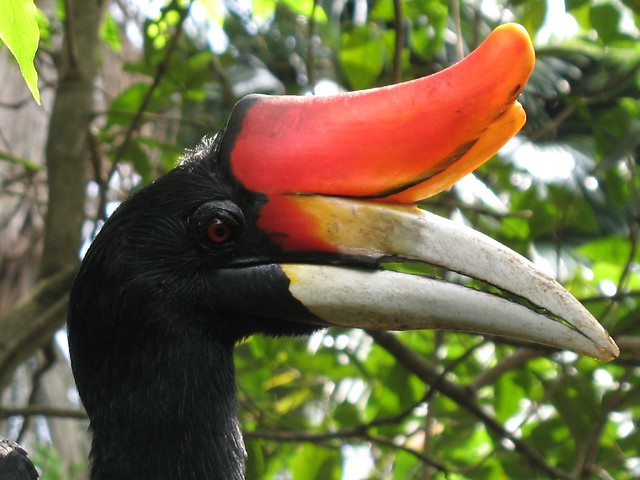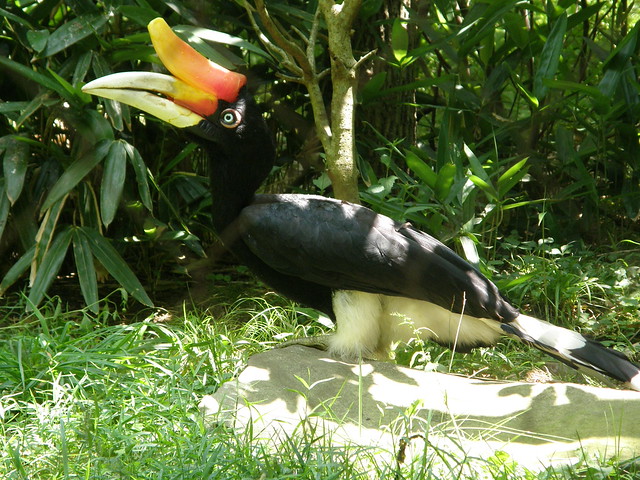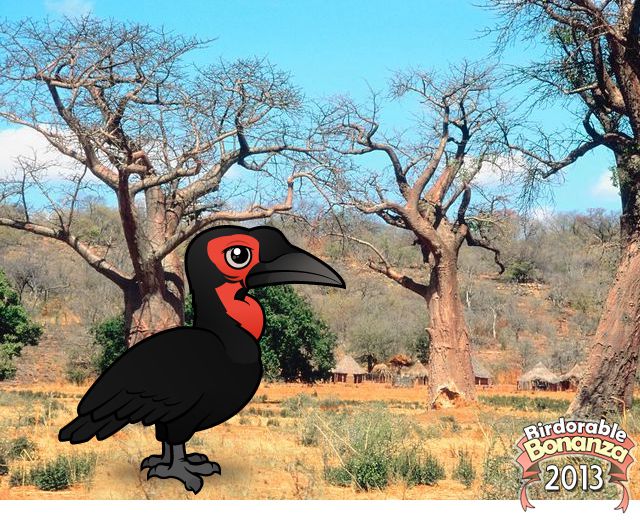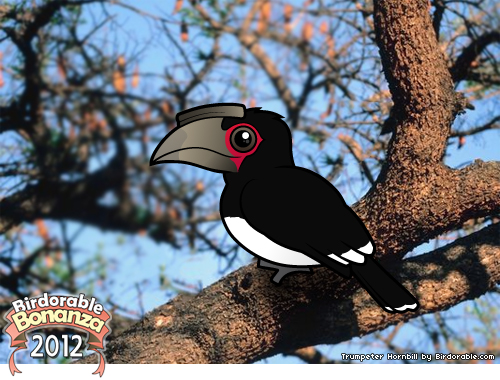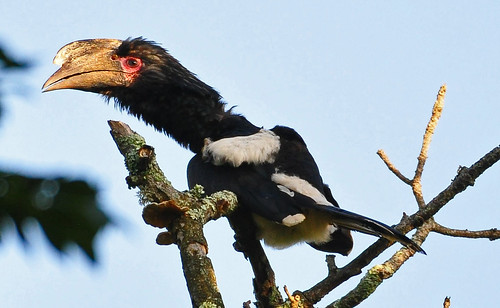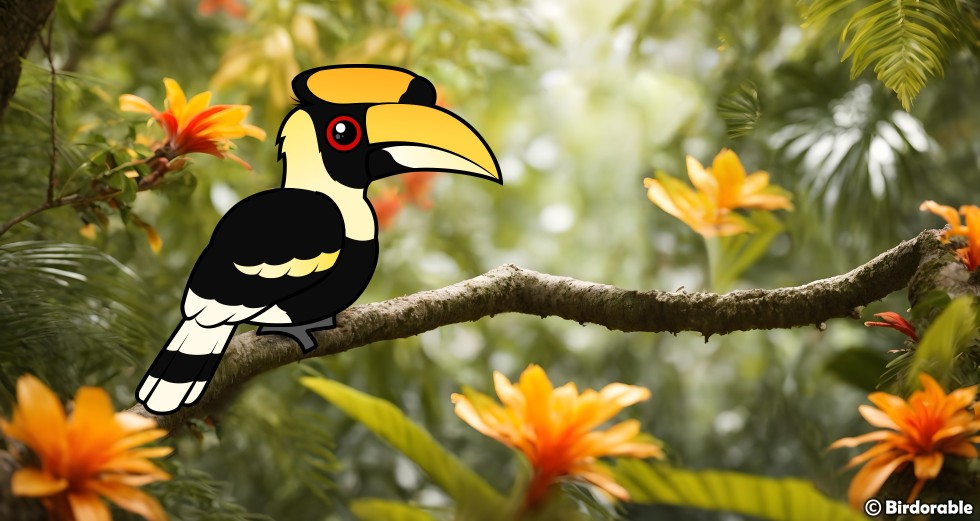
Hornbills are fascinating birds, known for their distinctive bills and other unique characteristics. There are about 55 extant species of Hornbill Bucerotidae in the world. Here are some interesting facts about the family, and about some of the individual species:
Old World Birds
Hornbill species are found in sub-Saharan Africa and Asia. In the Neogene period (23.03 million years ago - 2.58 million years ago), Hornbills lived in North Africa and Southern Europe.
Unique Beak and Casque
Hornbills are easily recognized by their large, curved bills. These are often brightly colored. Some are topped with a casque - a hollow structure that can vary in size and shape among different species. This casque may be used in courtship rituals, as a resonating chamber for their calls, for dominance displays or fights, or simply to reinforce the heavy bill.
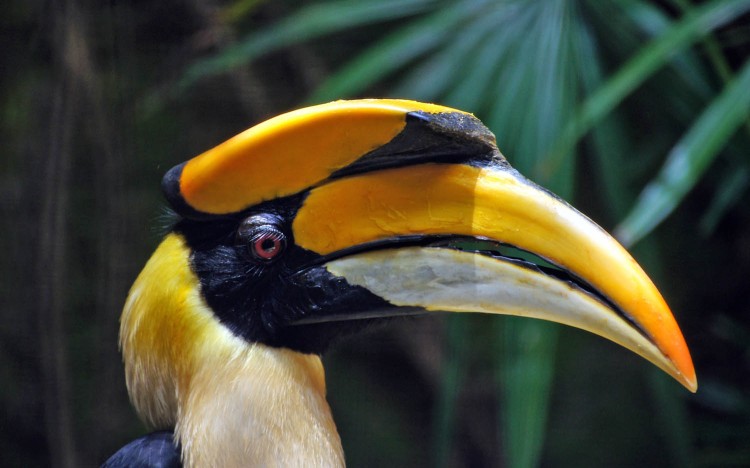
Great Hornbill by Bernard Spragg (public domain)
Special Necks
Hornbills are the only birds who have their first and second neck bones fused together! It is thought that this adaptation gives them a better chance to hold up their large, heavy bills! The fusion of these neck bones provides enhanced strength and stability, allowing them to use their powerful beaks effectively for various activities such as foraging, nesting, and self-defense.
Remarkable Nesting Behavior
Hornbills have an unusual nesting habit. The females are sealed into a tree cavity. In some species the female does this on her own, and in others the male helps to complete the seal. At the end of this construction, once the female is about ready to lay the eggs, only a small slit remains open! The male then feeds her and the chicks through this slit until the young are ready to fledge. This amazing behavior protects the nest from predators. Ground Hornbills are the only species that do not nest this way.
Diverse Diet
Hornbills are omnivores and their diet varies widely, including fruit, insects, small mammals, and birds. Some forest species are vital for seed dispersal in their habitats due to their fruit-eating habits. Food picked up with the tip of the beak is tossed into the throat by jerking the head back.
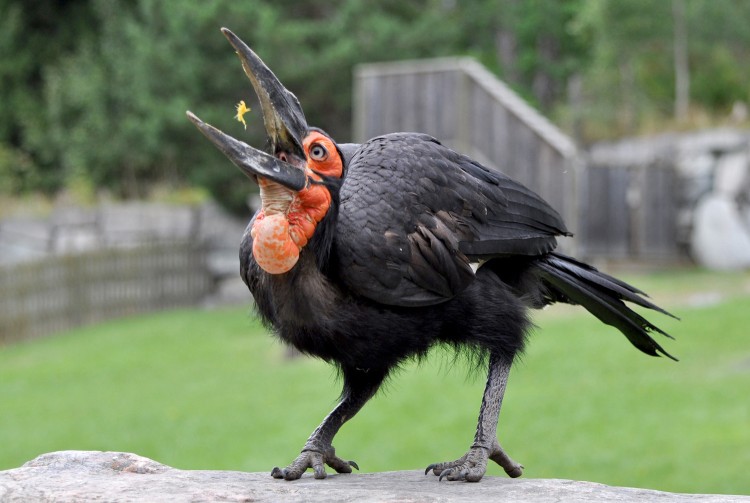
Southern Ground Hornbill by Neil McIntosh (CC BY 2.0 DEED)
Eyelashes
Among the many fascinating attributes of hornbills, one of the most intriguing is their possession of eyelashes, a rarity in the avian world. These eyelashes, far from being mere aesthetic features, serve an essential functional role. In the dusty, debris-filled environments where many hornbills reside, such as dense forests or savannas, their eyes are constantly exposed to potential irritants. The eyelashes act as a protective barrier, shielding their sensitive eyes from fine dust particles, small insects, and plant matter. This adaptation is particularly crucial given the hornbills' active lifestyle, which involves foraging through foliage, digging into bark, and often engaging in flight through dense vegetation.
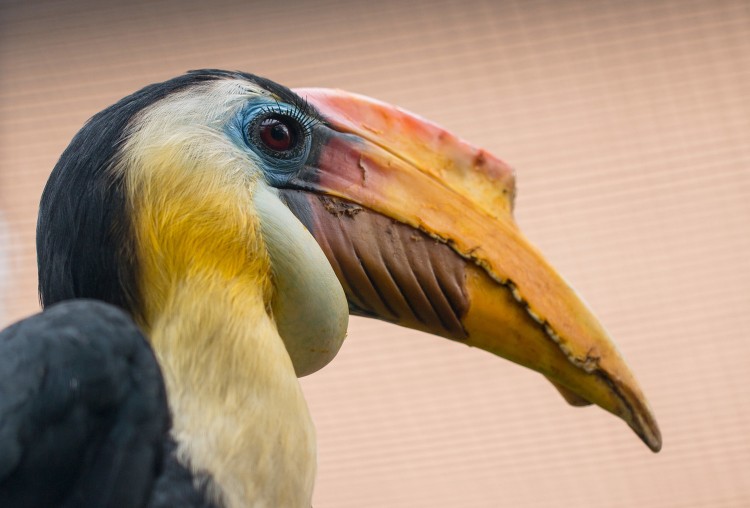
Wrinkled Hornbill by Martin de Lusenet (CC BY 2.0 DEED)
Endangered Status
Several Asian Hornbill species, including the iconic Helmeted Hornbill and the Great Hornbill, find themselves on the brink, mainly due to habitat loss and hunting. These birds, integral to tropical forest ecosystems, are losing their homes at an alarming rate as deforestation for agriculture, logging, and urban development ravages their natural habitats. The situation is exacerbated by the illegal wildlife trade, where hornbill casques (the upper part of their beaks) are highly sought after for ornamental purposes, akin to elephant ivory. Additionally, in some regions, hornbills are hunted for their meat and feathers, further dwindling their numbers.
Birdorable Hornbills
Our Birdorable family of birds includes seven species of the world's 55 Hornbills. Here are the Birdorable Hornables:
Famous Hornbill
Among the most recognizable hornbills in popular culture is Zazu, the fastidious and loyal majordomo to the king in Disney's iconic film "The Lion King." Portrayed as an African Red-billed Hornbill, Zazu is a character who combines wit and wisdom in his role as advisor and confidant to the rulers of Pride Lands. This depiction in a major animated film has brought significant attention to the species, characterized by their distinctive long, down-curved bill and their vibrant mix of colors. The African Red-billed Hornbill, native to the savannas and woodlands of Sub-Saharan Africa, plays a vital role in the ecosystem, primarily as a seed disperser and a predator of insects.






















